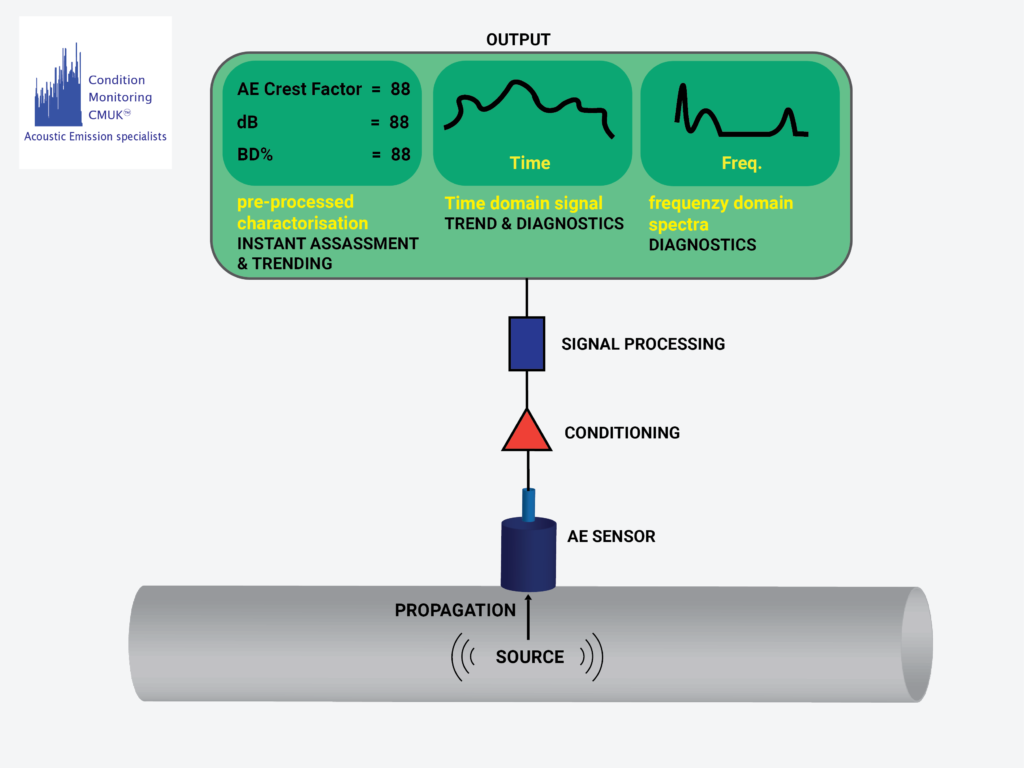ACOUSTIC EMISSION TECHNOLOGY
____Acoustic emission (AE) technology is a non-destructive testing (NDT) technique used to detect and analyze the transient elastic waves (acoustic emissions) that are generated by the sudden release of energy from localized sources within a material or structure when subjected to stress or deformation. It is commonly employed for monitoring the integrity of materials and structures in various industries such as aerospace, civil engineering, power generation, manufacturing, and oil and gas.

___The basic principle behind AE technology is that when a material undergoes deformation or damage, such as cracking, micro-cracking, or delamination, it emits stress waves in the form of high-frequency acoustic signals. These signals can be detected by sensitive sensors (typically piezoelectric transducers) placed on or near the material being monitored. The signals are then amplified, filtered, and analyzed to provide valuable information about the location, magnitude, and nature of the detected events.
___Analysis of these signals yield valuable information regarding the origin and importance of a discontinuity in a material. As discussed in the following section, specialized equipment is necessary to detect the wave energy and decipher which signals are meaningful